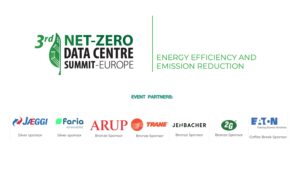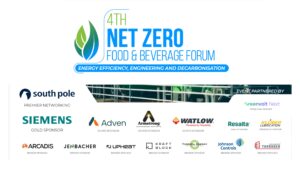The European Investment Bank is making a huge bet on water, and it’s one that will change the continent. With tens of billions of euros to spend on water infrastructure, everyone is wondering one simple question:- why? It is not only about the replacement of leaky pipes, but it is a carefully thought-through step in the overall effort to protect the economic future of Europe, to combat the rising climate crisis, and kickstart a major bout of technological innovation.
Water is perhaps the most volatile and pivotal resource of the 21st century. This strategic shift raises the burning question of why is the EIB investing in water infrastructure. This article dissects the four pillars needed behind the multi-billion-euro investment. It examines the economic imperative, climate mandate, policy framework, and technological frontier for this continental shift.
The Economic Imperative: Securing Europe’s Prosperity Against Water Volatility
Water is no longer merely an environmental concern; it is a savvy economic move. European governments and businesses are finding that solid water systems are a road to financial prosperity. All the industries are alive due to clean, reliable water that keeps their operations humming, energy systems healthy, and supply chains active. When you invest in a water infrastructure, you are really investing in the infrastructure that keeps things going together.
De-risking Key Industries from Critical Supply Chain Disruption
Modern manufacturing depends on water in huge amounts. For instance, one semiconductor manufacturing plant can need millions of gallons per day. Hence, a temporary shutdown due to drought/pollution can shut down production lines. This can result in billions of losses. When water is lacking at manufacturing centers, ripples move through worldwide supply chains. This affects everything from automobiles to consumer electronics.
This is where strategic EIB Water Investment steps in. By funding strong water sources such as new water recycling plants for industrial parks or new reservoirs, the European Investment Bank makes secure working conditions a reality. The projects make water-hungry industries such as pharma, food and beverage, and data centers not hostage to increasingly more erratic weather patterns. It’s economic insurance. It enables industrial production, safeguarding jobs, and ensuring Europe’s competitiveness.
Closing the €255 Billion Infrastructure Investment Gap from Decades of Neglect
Throughout Europe, large sections of water infrastructure are a product of a bygone era. Numerous cities have pipes installed decades ago, and this results in overwhelmingly inefficient systems. On average, a quarter of all treated, pumped water is lost to leaks before it even makes it to taps. This is not just wasting resources; it’s huge energy and money waste. For years, upkeep was put off for more glamorous public works, building up “technical debt” now outstanding. The cost of upgrading the systems is estimated at a whopping €255 billion.
Local municipalities and regional utilities just do not have the capital to address this challenge on their own. This is where EIB Infrastructure Projects at large scales come into the picture. The European Investment Bank offers long-term, low-interest capital required for generational upgrades. This capital allows for the replacement of thousands of kilometers of old pipelines, the modernization of treatment works, and the saving of energy.
Unlocking Private Capital with Blended Finance and First-Loss Guarantees
The scale of the water infrastructure challenge is too enormous to be addressed by public funds alone. Europe requires massive private investment from pension funds and asset managers. Yet these investors tend to be hesitant because of perceived risks, long repayment times, and intricate regulations.
With “blended finance,” the European Investment Bank leverages public financing to de-risk investments for private partners. One of the most powerful tools is the “first-loss guarantee,” whereby the EIB takes the first slice of financial losses. This is a strong incentive, making investments much less risky. By assuming initial risk, the EIB Climate Bank actually mobilizes billions of private investments that would otherwise be left on the sidelines, multiplying each public euro’s impact on critical EIB Infrastructure Projects.
Valuing Water as a Core Economic Asset to Drive a Water-Smart Economy
For over two hundred years, societies have used water as a plentiful, nearly free commodity. This resulted in mass waste and inefficiency. Today, more individuals realize that water is a finite, valuable economic resource whose real cost is more than the tap output. Moreover, “Real cost” implies energy for treatment and pumping, the cost of transportation infrastructure, and environmental damage costs.
This rethinking forms the focus of bridging the EIB Climate Bank mission. One of the main goals of the EIB Water Investment policy is to build a “water-smart economy” where resources are managed and valued for what they’re truly worth. Once water is economically valuable, it promotes recycling and reuse innovation. So, this makes it a renewable resource rather than a disposable good.
The Climate Mandate: Building a Resilient Continent in the Face of Extreme Weather
The water crisis is the climate crisis in its most elemental form. Its effect resonates most directly via water—either devastating, historic floods or slow, corrosive economic suffocation through persistent droughts. The ability to resist these extremes is no longer a nicety; economic and societal survival hangs in the balance.
Fortifying Coastal and River Cities Against Catastrophic Flooding Events
European urban centers are becoming ever more exposed to disaster flooding. Sea levels are rising & reclaiming coastal centers. Furthermore, excessive rain is filling rivers/ overflowing them with increasing regularity. These events bring immediate devastation and knock out power equipment. They additionally disrupt transport, pollute water supplies, and take decades to fix. Modern flood defense requires wise, methodical solutions that are in concert with, not against, nature.
This is the priority area for EIB loans for climate resilient infrastructure in Europe. EIB financing supports multipurpose projects that integrate “gray” infrastructure. It includes storm surge barriers and strengthened dykes, with “green” projects such as the restoration of coastal wetlands and the development of urban parks that contain rainwater-absorbing properties. Additionally, these EIB multifunctional Infrastructure Projects defend valuable assets and communities by managing at the watershed level.
Combating “Day Zero” Scenarios in Southern Europe’s Drought Hotspots
While some parts of Europe are flooded, others suffer from its opposite: drought. The remoteness of Spain, Portugal, Italy, and Greece has been through severe droughts, whose continuation looms as a possibility. It affects agriculture, tourism, and everyday life, inducing “Day Zero” fear: taps running dry. Furthermore, this is no longer a potential danger for the future; it is now an inevitability that needs gargantuan, visionary investment.
Overcoming this challenge is one of the most critical reasons for the question of why is the EIB investing in water infrastructure. European Investment Bank funding for water projects is an essential part of building huge, drought-proofing infrastructure. They comprise lending high-tech desalination plants that turn seawater into fresh water, constructing pipes that transport water from over- to under-supplied regions, and lending transitions to hyper-efficient drip irrigation in agriculture. Moreover, these EIB Water Loans are Europe’s drylands lifeline.
Protecting Freshwater Ecosystems and Halting Biodiversity Loss from Pollution
Healthy ecosystems give critical water services without costing a dime naturally. Wetlands purify pollutants, forests control water flows, and healthy riverbanks avoid unnecessary erosion of rivers. However, these systems are witnessing severe degradation through habitat destruction, due to pollution, and it is worse with climate change. Heavy downpours also wash more farm fertilizers and factory chemicals into rivers, and drought withers flows, compacting pollutants & killing aquatic life.
The Climate Bank vision of the EIB is one of seeing ecological well-being & water security as two sides of the same coin. The approach extends way beyond steel and concrete to include the restoration of natural capital. In addition, the EIB finances projects that rewild riverbanks and restore wetlands degraded by human activities. It also creates buffer strips along rivers and lakes to trap runoff.
Championing Nature-Based Solutions for Sustainable Landscape Water Retention
Standard water management practices for a long time were hard infrastructure. This includes canals, dams, & levees. However, there is a growing realization now that nature solutions often yield better, cheaper, and more sustainable results. Furthermore, nature-based solutions employ natural processes to manage water, providing robust alternatives to entirely engineered solutions.
This new approach is one of the most important pillars in the EIB loans for climate resilient infrastructure in Europe. The bank actively invests in projects with a strong preference for green solutions, with multiple co-benefits. In contrast to concrete canals, re-naturalized floodplains are recreational parks and wildlife habitats in addition to flood defenses. Additionally, these projects are more affordable lifecycles and actively support Europe’s climate and biodiversity goals.
The Policy Blueprint: How EU Directives Are Forcing a Wave of Modernization
The European Investment Bank’s huge foray into water infrastructure isn’t only a bold decision—it’s supported by tough rules. The European Union has tough legal frameworks that impose obligatory targets for water quality and sustainability. These laws compel member states to move forward and act.
Enforcing the Water Framework Directive’s “Good Status” Mandate for All Water Bodies
The cornerstone of all EU water policy is the Water Framework Directive (WFD), which was taken up in 2000. Its primary aim is legally binding: all EU waters (rivers, lakes, and groundwater) must be in “good chemical and ecological status.” Furthermore, s number of member states are already in short supply of WFD targets. This risks legal action and significant financial penalties.
This legal pressure creates humongous, unquestionable investment requirements. To respond to WFD requirements, states need to upgrade water treatment facilities. They also need to minimize agricultural and industrial pollution and restore river biosystems. These actions need a lot of capital, where the EIB Water Loans are at the forefront. Moreover, the directive indirectly provides humongous, regulated markets for water modernization projects.
Translating the European Green Deal into Actionable Water Resilience Projects
The master plan of the continent to turn climate-neutral by 2050 stands to be the European Green Deal. Individuals typically correlate the Green Deal with renewables & e-mobility, but water management is no less important. Without overhauling how we manage water, there’s no way to reach its biggest goals—like the “zero pollution ambition” or the “biodiversity strategy.”
The European Investment Bank, the EU’s special EIB Climate Bank, is the financing frontline that must turn the lofty Green Deal vision into reality. It translates policy intentions at the top level into concrete and earthed ones as fundable EIB Infrastructure Projects. Furthermore, the EIB Water Investment strategy, in reality, is the Green Deal and offers the financial framework essential to create sustainable & water-secure continents.
Tackling Agricultural and Chemical Runoff Under the Zero Pollution Action Plan
For decades, Europe’s biggest water-quality threat has been diffuse pollution. These are nitrates and pesticides flowing off fields and leaking out of factories. Furthermore, this encompasses nitrates and agricultural pesticides, as well as industrial process persistent chemicals such as PFAS. They are especially problematic since these “forever chemicals” are recalcitrant to environmental degradation and not removed by traditional wastewater treatment.
The EU Zero Pollution Action Plan reports ambitious plans to dramatically reduce runoff, thus demanding immediate technological overhauls. Moreover, it is the second major catalyst of EIB Water Investment. The bank finances the building of advanced water treatment plants with technologies such as activated carbon filtration and ion exchange systems. These extract stubborn pollutants.
Mobilizing Cohesion Policy Funds to Ensure Water Equality Across Member States
The European Union uses “cohesion” to reduce economic and social gaps between member nations. It invests Cohesion Policy funds directly into less developed regions to make that happen. Water infrastructure is one of the most important areas, since the majority of Southern and Eastern Europe continues to suffer from archaic systems, poor sanitation, and inadequate access to clean water.
The European Investment Bank works in close collaboration with the EU Cohesion Policy, often co-financing projects in order to have maximum impact. Combining its own EIB Water Loans with Cohesion Fund grants, it makes essential infrastructure improvements more accessible to countries with more constrained national budgets.
The Innovation Frontier: Betting on Technology to Create a Water-Secure Future
Addressing Europe’s staggering water challenges takes more than policy and finances; it takes a technological revolution. The last piece of the puzzle is the EIB’s dedication to funding next-generation water technology. By investing in innovation, the bank addresses current challenges while making Europe a world leader in the booming water-tech industry.
Financing the Digitalization of Grids to Combat Europe’s 25% Average Water Leakage Rate
One of the most preventable and debilitating issues in water management is leakages. Across Europe as a whole, on average, 25% of treated water leaks away through old systems of pipes before it can be used. “Smart water grids” respond by putting digital technology into physical assets. It entails the deployment of networks of acoustic sensors to “eavesdrop” on leaks, the deployment of smart meters monitoring real-time consumption, and the utilization of AI-driven software reading pressure and flow data to anticipate possible pipe bursts.
Digitalization is one of the high-priority sectors for European Investment Bank finance for water projects. Moreover, the bank is financing utilities in the process of shifting from reactive “find and fix” to proactive “predict and prevent” utilities. In addition, these digitalization investments repay in a very short and impressively good time.
Scaling Advanced Wastewater Treatment for Circular Reuse in Agriculture and Industry
Traditionally, there was only one objective of wastewater treatment: treating water to make it safe for river discharge. The new strategy, the core of the circular economy, does not regard wastewater as a waste disposal matter but rather as a potential source of water, energy, and nutrients. Wastewater is treated by treatment plants nowadays to an extent that wastewater can be reused for industrial applications or irrigation in agriculture.
This shift to resource recovery is the highest priority of EIB Water Investment. Furthermore, the bank funds new constructions and upgrades of such advanced water treatment plants, closing water usage loops. By financing projects that turn wastewater into valuable assets, the EIB encourages circular approaches. It enhances water security, reduces pollution, and also creates new revenues for utilities.
Fostering a Global Hub for Water Technology Patents and High-Growth Startups
Europe is already a water technology innovation cluster, with countries like the Netherlands, Germany, and Denmark being global leaders in water technology patents. But many good research organizations and start-up concepts never find their way from the lab to commercial markets. This “valley of death” is generally due to a lack of growth capital and failure to demonstrate new technologies on a large scale.
European Investment Bank is a sector incubator. It exhibits its influence through venture debt and direct equity investment. This facilitates seed capital expansion, enabling forward-looking water-tech start-ups to grow. Moreover, the financing enables patented technology start-ups to commercialize them, whether advanced filtration membranes or innovative AI-based analysis software.
Investing in Next-Generation Desalination and Contaminant Purification Systems
For most water-scarce areas, especially coastlines and islands, desalination or removal of salt from seawater is the only way of accessing freshwater. Furthermore, huge inputs of energy and costs have always been the main deterrent. Likewise, removal of contaminants such as PFAS needs very sophisticated, often energy-dependent purification procedures.
This is the frontier of European Investment Bank funding of water projects. The bank singles out, especially, technology that can reduce water production energy footprints. It involves investment in first-of-a-kind commercial-scale plants applying new processes such as membrane distillation. These can operate on low-grade waste heat, or capacitive deionization with electricity charges stripping salt from water.
To Sum Up
The multibillion-euro proposal of the European Investment Bank is a strong and clear-cut answer to the most important issues that Europe is facing at the moment. It is a universal policy with four pillars: economic protection against shocks in water, building physical barriers against the bitter truth about climate change, rolling out the continent’s ambitious green rules, and launching technological revolutions in water management. This is far more than infrastructure programs; it’s calculated, long-term visions for a resilient, sustainable, and prosperous Europe. Every EIB Water Loan and every funded project takes the continent closer to ensuring its most essential resource.
These are exactly the types of strategic issues—spanning from regulation and ESG reporting through to water circularity and emerging technology—that will be at the forefront of the 2nd Industrial Water & Wastewater Management Summit 2025 agenda. To meet with the industry stakeholders, tech providers, and policymakers forging that future, join us in Barcelona, Spain, on the 7th and 8th of October. Register now!




